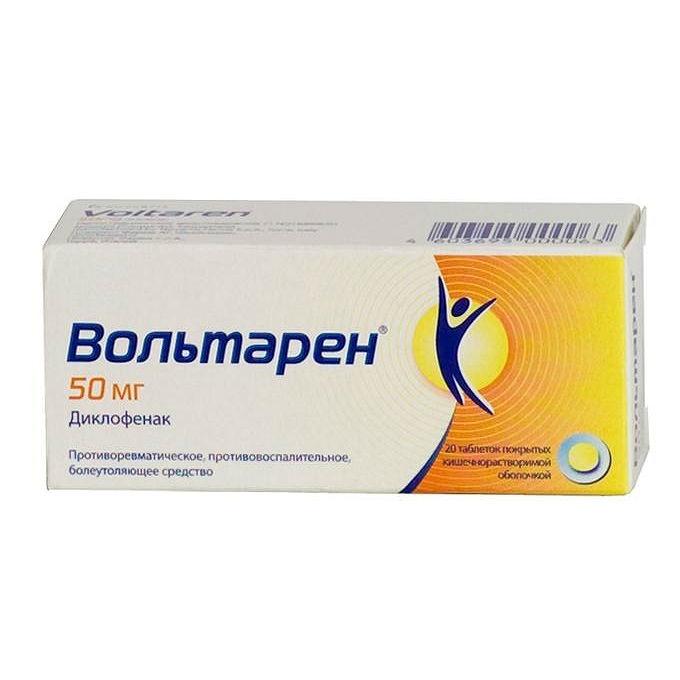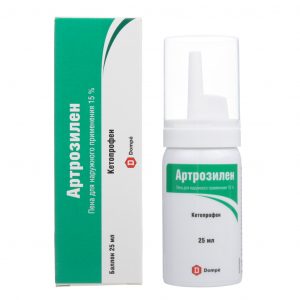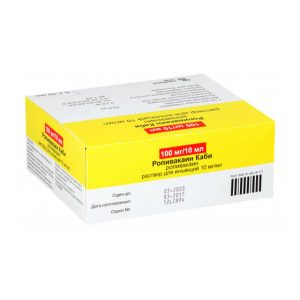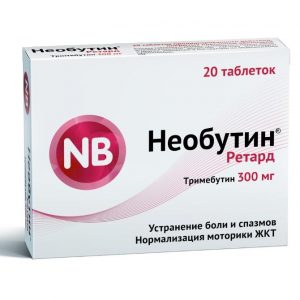Description
Enteric-release form Tablets, enteric-coated
Packing
20 pcs.
Pharmacological action of
NSAIDs. Voltaren contains diclofenac sodium, a non-steroidal substance that has a pronounced anti-inflammatory, analgesic and antipyretic effect.
The main mechanism of action of diclofenac, established in the conditions of the experiment, inhibition of prostaglandin biosynthesis is considered. Prostaglandins play an important role in the genesis of inflammation, pain, and fever.
In vitro diclofenac sodium in concentrations equivalent to those achieved in treating patients does not inhibit the biosynthesis of cartilaginous proteoglycans.
In rheumatic diseases, the anti-inflammatory and analgesic properties of Voltaren provide a clinical effect, characterized by a significant decrease in the severity of such manifestations of diseases as pain at rest and during movement, morning stiffness and swelling of the joints, as well as an improvement in the functional state.
In post-traumatic and postoperative inflammatory conditions, Voltaren quickly relieves pain (occurring both at rest and during movement), reduces inflammatory edema and edema of the postoperative wound.
Indications
inflammatory and degenerative diseases of the musculoskeletal system: rheumatoid arthritis, juvenile rheumatoid arthritis, ankylosing spondylitis, osteoarthritis, spondylitis, osteoarthritis
spinal diseases,
pain syndrome accompanied by rheumatic diseases of extraarticular soft tissues
acute gout attack (for enteric-coated tablets only)
post-traumatic and postoperative pain syndromes accompanied by
inflammation and edema gynecological diseases accompanied by pain, such as inflammation, and adnexitis)
as an additional remedy for severe infectious and inflammatory diseases of the ear, throat and nose, flowing with severe pain, for example, with pharyngitis, tonsillitis, otitis media (with the exception of retard tablets). The main treatment of the disease is carried out in accordance with generally accepted principles, including using etiotropic therapy. gynecological diseases accompanied by inflammation and edema
, accompanied by pain and inflammation (for example, primary algodismenorrhea, adnexitis)
as an additional remedy for severe infectious and inflammatory diseases of the ear, throat and nose, occurring with severe pain, for example, with pharyngitis, tonsillitis , otitis media (excluding retard tablets). The main treatment of the disease is carried out in accordance with generally accepted principles, including using etiotropic therapy. Isolated fever is not an indication for the use of the drug
Contraindications
gastric or intestinal ulcer
history of asthma attacks, urticaria, acute rhinitis associated with the use of acetylsalicylic acid or other NSAIDs, as well as any drugs that suppress the production of prostaglandins
proctitis (only for suppositories)
hematopoiesis
children under 14 years old
hypersensitivity to diclofenac and any other ingredients of the drug.
Use during pregnancy and lactation
Use of Voltaren during pregnancy is possible only in cases where the expected benefit to the mother outweighs the potential risk to the fetus.
The drug is prescribed in the minimum effective dose. As with other prostaglandin synthetase inhibitors, these recommendations are especially important in the third trimester of pregnancy (suppression of uterine contractility and premature closure of the ductus arteriosus in the fetus is possible).
The use of Voltaren in the form of a solution for i / m administration during pregnancy is not recommended.
If it is necessary to administer Voltaren in the form of a solution for intramuscular administration during lactation, the question of stopping breastfeeding should be decided.
Special instructions
During the use of Voltaren, careful medical supervision of those patients who have complaints indicating gastrointestinal diseases who have a history of ulcerative lesions of the stomach or intestines with ulcerative colitis or Crohn’s disease, as well as those with impaired liver function, is necessary.
Against the background of the use of Voltaren, gastrointestinal bleeding or ulceration / perforation of the gastrointestinal tract may occur (for the first time or repeatedly) at any time, accompanied or not accompanied by precursor symptoms. More serious consequences of these complications may occur in elderly patients. In those rare cases when patients receiving Voltaren develop these complications, the drug should be discontinued.
At the first use of Voltaren, as well as other NSAIDs, in rare cases allergic reactions can develop, including anaphylactic and anaphylactoid reactions.
Voltaren, due to its pharmacodynamic properties, can mask the manifestations of infectious diseases.
Voltaren, like other NSAIDs, can temporarily inhibit platelet aggregation. Therefore, in patients with hemostatic disorders, careful monitoring of relevant laboratory parameters is necessary.
With prolonged use of Voltaren, like other NSAIDs, Systematic monitoring of peripheral blood picture is shown.
Influence on the ability to drive vehicles and operate machinery:
Patients who experience dizziness or other disorders of the central nervous system, including visual impairment, should not drive a car or operate machinery while using the drug while using Voltaren.
Composition
1 tablet contains:
Active substances: diclofenac (in the form of sodium salt) – 50 mg
excipients: airgel, silicon dioxide, microcrystalline cellulose, lactose, magnesium stearate, corn starch, polyvidone, sodium carboxymethyl starch, hydroxypropyl methyl cellulose, glyceryl polyethylene glycol stearate, iron oxide yellow (E172), talc, titanium methyroxy dimethyl copolymene, ethylene dioxide 8, copolymer
Dosage and administration
Tablets should be swallowed whole, washed down with liquid, preferably before meals.
For adults, the recommended starting dose is 100-150 mg / day. In relatively mild cases of the disease, as well as for long-term therapy, 75-100 mg / day is sufficient.
The daily dose should be divided into several doses. If necessary, act on night pain or morning stiffness in addition to taking the drug during the day, appoint Voltaren in the form of suppositories at bedtime, while the total daily dose should not exceed 150 mg.
In primary dysmenorrhea, the daily dose is selected individually, usually it is 50-150 mg.
The initial dose should be 50-100 mg, if necessary, for several menstrual cycles it can be increased to 150 mg / day.
Taking the drug should begin when the first symptoms appear. Depending on the dynamics of the clinical symptoms, treatment can be continued for several days.
Children with a body weight of 25 kg or more are prescribed a dose of 0.5-2 mg / kg body weight / day (in 2-3 doses, depending on the severity of the disease).
For the treatment of rheumatoid arthritis, the daily dose can be maximally increased to 3 mg / kg (in several doses).
Enteric coated tablets of 50 mg are not recommended in children.
Side effects
The following gradations were used to assess the incidence of various side reactions:
Often -> 10%.
Sometimes -> 1-10%.
Rarely -> 0.001-1%.
In some cases, <0.001%. From the digestive system: Sometimes – epigastric pain, nausea, vomiting, diarrhea, abdominal cramps, dyspepsia, flatulence, anorexia, increased activity of aminotransferases in blood serum. Rarely, gastrointestinal bleeding (vomiting of blood, melena, diarrhea mixed with blood), stomach and intestinal ulcers, with or without bleeding or perforation, hepatitis, with or without jaundice. In some cases – aphthous stomatitis, glossitis, damage to the esophagus, occurrence of diaphragm-like strictures in the intestine, disorders of the distal colon, such as nonspecific hemorrhagic colitis, exacerbation of ulcerative colitis or Crohn’s disease, constipation, pancreatitis, fulminant hepatitis. From the side of the central nervous system and peripheral nervous system: Sometimes – headache, Dizziness Rarely – drowsiness. In some cases – sensitivity disorders, including paresthesia, memory disorders, disorientation, insomnia, irritability, cramps, depression, anxiety, nightmares, tremors, psychotic reactions, aseptic meningitis. On the part of the sensory organs: In some cases – visual impairment (blurred vision, diplopia), hearing impairment, tinnitus, taste disturbance. From the cardiovascular system: In some cases – a feeling of palpitations, chest pain, increased blood pressure, worsening congestive heart failure. Dermatological reactions: Sometimes – skin rashes. Rarely – urticaria. In some cases, bullous rashes, eczema, erythema multiforme, Stevens-Johnson syndrome, Lyell syndrome (acute toxic epidermal necrolysis), erythroderma (exfoliative dermatitis), hair loss, photosensitivity reactions, purpura (including allergic). From the urinary system: Rarely – edema. In some cases, acute renal failure, hematuria, proteinuria, interstitial nephritis, nephrotic syndrome, papillary necrosis. From the hemopoietic system: In some cases – thrombocytopenia, leukopenia, hemolytic anemia, aplastic anemia, agranulocytosis. Hypersensitivity reactions: Rarely – bronchospasm, systemic anaphylactic / anaphylactoid reactions, including hypotension. In some cases – vasculitis, pneumonitis. Local reactions: Sealing, pain. In some cases – abscesses, necrosis. The listed side effects were observed including when using doses of the drug and the duration of treatment that differ from the recommended ones. Drug Interactions Voltaren can increase the concentration of lithium and digoxin in plasma while used with these drugs. Voltaren, like other NSAIDs, may decrease the effect of diuretics. The simultaneous use of Voltaren with potassium-sparing diuretics can lead to an increase in the level of potassium in the blood (in the case of such a combination of drugs, this indicator should often be monitored). Concomitant use of Voltaren with other NSAIDs may increase the risk of side effects. Although clinical studies have not established the effect of Voltaren on the action of anticoagulants, there are some reports of an increased risk of bleeding in cases of their joint use. Careful monitoring of patients receiving these drugs at the same time is recommended. Voltaren can be prescribed in conjunction with oral hypoglycemic drugs and the effectiveness of the latter does not change. However, there are separate reports of the development in such cases of both hypoglycemia and hyperglycemia, which necessitated a change in the dose of hypoglycemic drugs during the use of Voltaren. Caution should be exercised when using NSAIDs less than 24 hours before the start of use or after the end of methotrexate therapy, as its blood level (and therefore toxicity) may increase. The effect of NSAIDs on the activity of prostaglandins in the kidneys may enhance cyclosporine nephrotoxicity. There are few reports of seizures in patients taking both NSAIDs and quinolone antibacterial drugs. Do not mix Voltaren solution in ampoules with solutions of other drugs for injection. Overdose There is no typical clinical picture of Voltaren overdose. Symptoms: decreased blood pressure, kidney failure, convulsions, gastrointestinal disorders and respiratory depression. Treatment: supportive and symptomatic. Forced diuresis, hemodialysis, or hemoperfusion are unlikely to be useful for NSAIDs. the active substances of these drugs are highly bound to plasma proteins and undergo intense metabolism. Storage conditions Store in a dark place at a temperature not exceeding 30 ° C. Shelf life 2 years. Deystvuyushtee substance Diclofenac Terms and conditions otpuska IZ drugstores prescription dosage form tablets Possible product names VOLTAREN 0.05 N20 TABLE P / O Voltaren 50mg Tab. cover intestines. about. X20 (R) VOLTAREN 50MG. No. 20 TAB. P / O KSH / SOLV. VOLTAR TAB. P.O. KSh / SOLUTION 50MG No. 20 VOLTAR TAB. P / O KSH / SOLV. 50MG No. 20 Novartis Farma Stein AG, Switzerland




